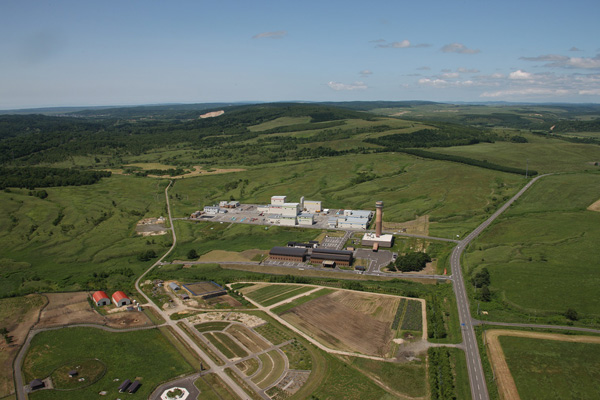Nuclear waste produced by nuclear power plants is a global problem. The United States tried to create a permanent geological repository at Yucca Mountain in Nevada but that project was cancelled in 2009. The best current estimate is that there will not be a permanent repository in the U.S. until 2050 at the earliest. There have been reports of nuclear waste being illegally transported from European countries to places like Russia and Somalia for disposal. Germany had to abandon a nuclear waste repository because of groundwater problems. Some countries have decided that they want to open repositories to take other countries waste.
Japan has a special problem with nuclear waste because it has relatively little land compared with other countries. Currently there are some seventeen thousand tons of spent fuel rods from Japanese reactors. If the Japanese decide to restart their fleet of reactors, even more waste will be generated.
The Japanese have constructed a laboratory below the farming community of Horonobe, Japan to the consternation of the inhabitants. The laboratory was built to collect geological data about the area below Horonobe. Japan is a country with live volcanoes, many geological faults that cause earthquakes, shifting flows of underground water and typhoons which cause tsunamis. The researchers in the laboratory are trying to find out if nuclear waste could be safely buried beneath Horonobe for a hundred thousand years. Tunnels in the shape of a figure eight have been dug through the three million year old sedimentary layers below Horonobe. Sensors have been placed in holes in the walls of the tunnels to monitor seismic activity and the movement of groundwater.
Horonobe has agreed to host the laboratory on the grounds that the research includes no radioactive materials. The community has received about ten million dollars since 2000 from the Japanese government in return for hosting the laboratory. In Japan, local governments have a lot of influence over whether or not a nuclear waste storage facility can be located in their jurisdiction. Following the nuclear disaster at Fukushima in March of 2011, the Japanese public is very concerned about restarting the nuclear reactors in Japan. They are also very resistant to the idea of hosting a permanent geological repository for nuclear waste. So far the research at Horonobe indicates that it might be a safe place to dispose of nuclear waste. Investigating another possible location for a repository could take as much as twenty years.
Japan's current plan for the existing nuclear waste is to reprocess it to make more fuel. Unfortunately, the Japanese facility for reprocessing nuclear fuel has met major problems and is over budget and behind schedule. The volume of waste remaining after reprocessing would be much smaller than the original waste. The remaining waste would be fused into glass logs and stored in a geological repository. While there are major technical issues in creating a permanent geological repository for nuclear waste in Japan, the biggest problems may be political.
Horonobe Underground Research Laboratory:
